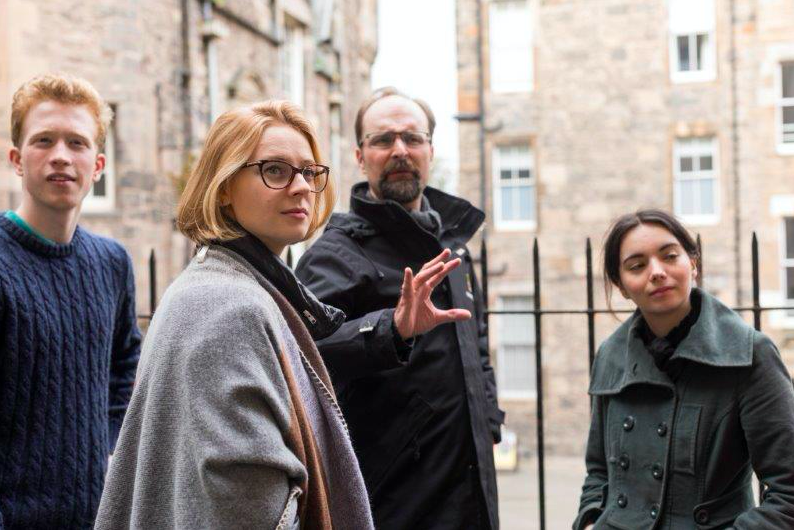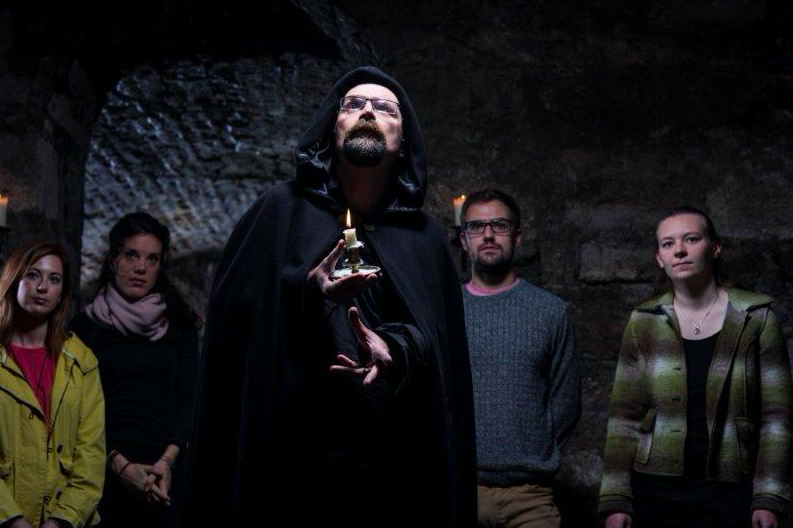No Tale is an Island
16th Apr 2021
Written by Mercat Tours Storyteller Jared
I never consciously saw myself as a storyteller, because there were so many good people out there who could already do it so well. It felt a bit like Bob Dylan’s pessimistic declaration in 1991 that ‘The world don't need any more songs.’
Stories were a vital part of my babydom in Canada, and it very likely goes back to my cousin/babysitter who would herself become an accomplished storyteller and folk musician.
My own family backgrounds contained amazing circumstances and scenarios full of the terrors of perpetual travel through Europe, and the wilds of New France in the 17th Century. And yet, the crucial missing items were the stories – the tales of specific people and events that would fill in the gaps and humanise my ancestors, particularly the strong women of the line.
I began to connect these threads together in my brain, so that the adventures of my forebears in Switzerland, the Holy Roman Empire, the ‘Atlantic Archipelago’ and the outer reaches of French North America became one grand narrative. It was as close as I could ever get to living within an Icelandic saga, whose stories work so beautifully because vivid actions happen within the broader brushstrokes of generations.
Why start a story with yourself when you could begin with your great-grandmother instead?
For me, daily life was weird and magical enough that I gathered plenty of thoughts and experiences, but without thought for ever delivering them, in written or spoken form. I saw myself from an early age as a cultural archivist, detailing the events of daily life but filtered through the perspective of an outsider or some kind of alien being.
Concerned relatives and neighbours saw this as cute and… well clearly, I was equipped with a little bit too much imagination as a child than what was practical. Growing up in a rural environment, tall tales, fishing tales and jokes were vital in a farming community, and this helped foster the idea of what could be called rural legends.
Local tales of odd Boo Radley-style figures, haunted houses, and extra-terrestrial spacecraft all swam in my mind. These competed with the science fiction I loved so much, particularly George Lucas’s Star Wars mythos, and inspired me to think in broader brushstrokes. As Margaret Atwood would write many years later, ‘Like a great many children before and since, I was an inventor of other worlds.’

As a 10-year-old, I also obsessed over detective comics and Alan Moore’s Batman tales, which – like Iceland’s sögur – combined broad themes with dialogue that veered from the profound to the comical.
And yet, despite this preparation, I was reluctant to tell stories, and certainly never to an audience. This reluctance changed dramatically at a university gathering involving both pupils and professors, when as my humble contribution I dramatised the lyrics of the old Northern English ballad ‘Matty Groves’.
For the first time, I was able to use the ideas I had acquired through two years of radio broadcasting to create a mood. The dice was cast, and part of me felt that this could be a vital mode of expression. And then, as so often happens in life, the impulse to channel tales got buried under lots of textbooks and applications.
The times changed. Indeed, my life changed, and suddenly I was living a whole new life in Scotland, the land of murder ballads and the border reivers I’d become so obsessed with. Though still using my voice, it was now in the service not of radio but of market research. In 2004, however, I experienced a life-adjusting event that nudged me again towards storytelling.
My journey with Mercat Tours
After signing up with Mercat Tours later that year – finally pursuing a lead after a colleague had mentioned the name of company director Des Brogan five years before – I found myself in a position to tell, shape and even write stories… for a live audience.
The thought was frightening and compelling, and reminded me that I still had a lot of creative energy to apply. All the overwrought imagination of my youth came flooding back as I began learning historical accounts of Edinburgh’s legendary figures, John Chiesley most immediately comes to mind.
The challenge was taking the historical facts as we had inherited them, and creating a living presence. A story in which real people also became characters, in which an account could metamorphosise into a comedy or tragedy. Suddenly, the lords, lairds and ladies of Scotland could compete with everyday people in tales that pack a punch, filled with witchcraft, cannibalism and public executions. And those were only the lighter elements!
Now I could finally dramatise and humanise the imposing names and dates of Scottish history in a way that my childhood self could only wonder at.
But the vital component is the energy one can create as a tour guide… an energy that can only work with an audience. Effective storytelling is as much about the listeners and their reactions, without which even the best tale remains a static monologue, entrapped in the pages of a dusty tome or manuscript.
As the pandemic restrictions gradually lift, this vital missing component will be restored, and the reunion between guide and audience will re-establish the magical storytelling experience that has painfully, yet necessarily, lain dormant.
Which reminds me of a very fine gravedigging tale… Come hear it on tour with us, and perhaps I'll even be your guide on our Doomed, Dead and Buried 16+ tour.

